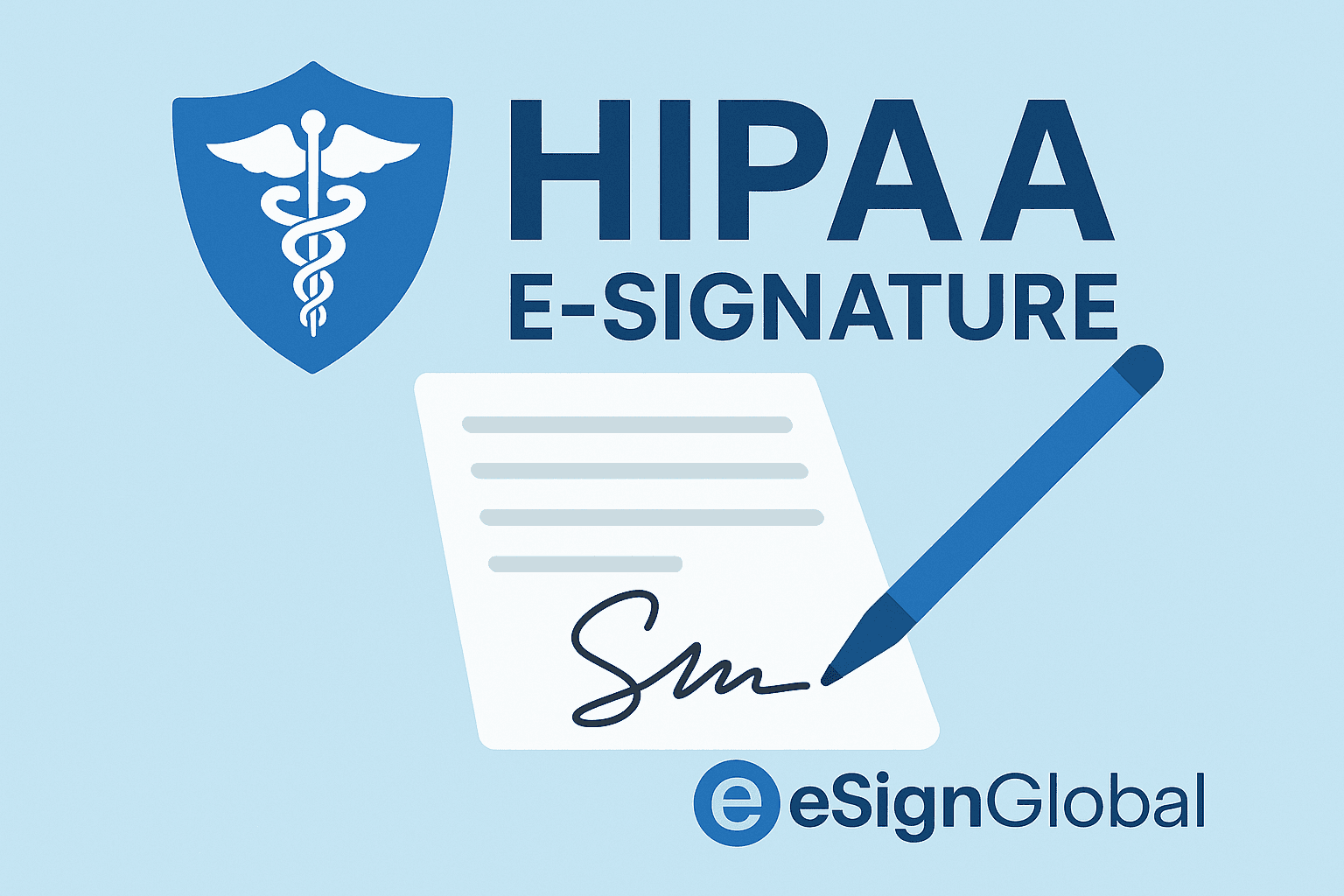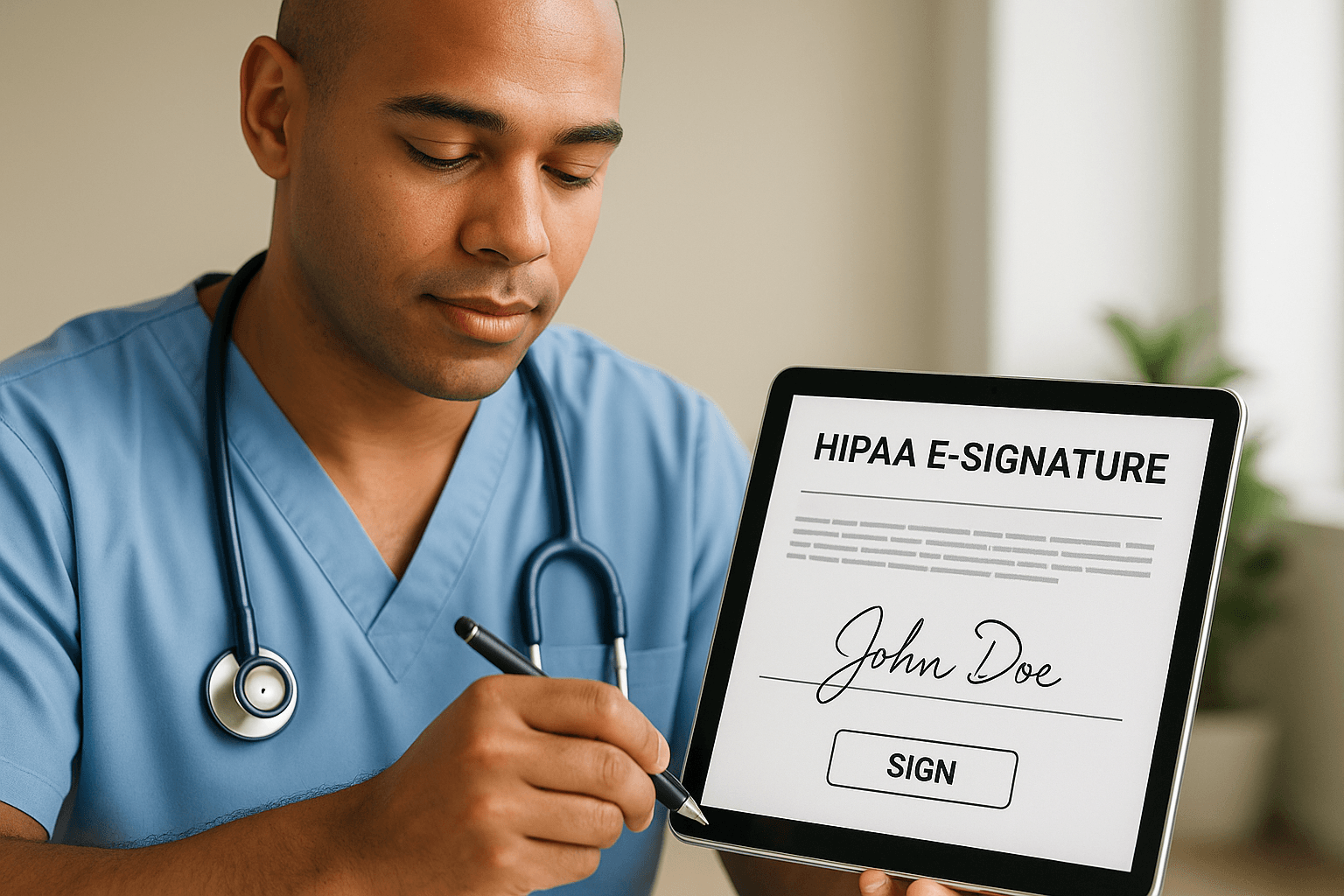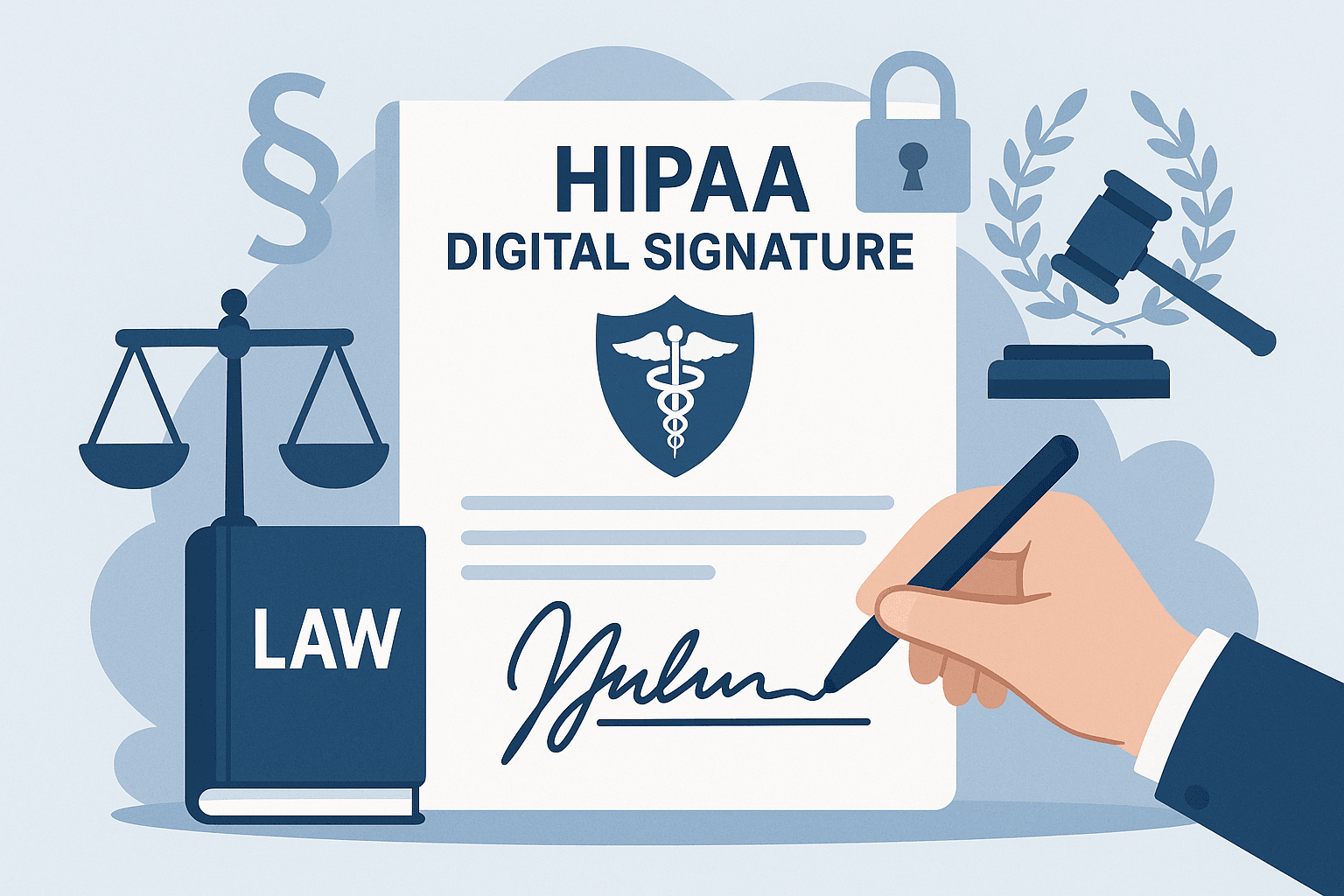WhatsApp or email with our sales team or get in touch with a business development professional in your region.
Navigating HIPAA Compliance in the eSignature Landscape: Best Document Signing Software





In today’s digital-first healthcare environment, operational efficiency is becoming a strategic mandate—not a luxury. Yet, for healthcare providers, insurers, and vendors working with protected health information (PHI), digitization must walk hand-in-hand with regulatory compliance. Nowhere is this more pressing than in the management and execution of contracts, consent forms, NDAs, onboarding paperwork, and other workflows that demand legally binding signatures. HIPAA (Health Insurance Portability and Accountability Act) adds a complex layer of compliance requirements. Organizations must ensure that their choice of eSignature software does more than offer convenience—it must adhere to strict security control, audit tracking, and privacy expectations. This is where understanding the intricacies of eSignatures—especially under HIPAA—is not just helpful, but business-critical.
Understanding eSignatures vs. Digital Signatures in a HIPAA Context
In the context of healthcare, the distinction between an electronic signature (eSignature) and a digital signature becomes not just technical, but regulatory. eSignatures refer broadly to any electronic process that indicates acceptance of an agreement, such as typing a name or clicking a checkbox. However, HIPAA-compliant solutions often require the robust assurance provided by digital signatures—cryptographically secured, identity-based mechanisms that are uniquely attributable and render the signed document tamper-evident.
Critically, under HIPAA Title II, which outlines administrative simplification rules, any system handling PHI must ensure confidentiality, integrity, and availability. Electronic signatures used in this context must offer traceability, verification safeguards, and proper access control mechanisms. A solution that lacks strong identity proofing and auditability may expose organizations to severe penalties and reputational damage.

Market Dynamics: eSignature’s Rapid Growth and Horizontal Expansion
The global eSignature market is projected to grow from USD 7.4 billion in 2023 to over USD 25 billion by 2030, according to MarketsandMarkets. In healthcare alone, Statista reports that the digital health market—of which eSignatures are a key enabling component—is undergoing unprecedented adoption across clinical and administrative use cases. Factors like remote care, telemedicine billing, and distributed health workforce collaboration have reinforced the dependency on secure, audit-ready, cloud-based signature technologies.
Particularly in jurisdictions such as the United States, Japan, South Korea, and Singapore, demand is bolstered by both the sophistication of healthcare IT infrastructures and strict regulatory environments, including HIPAA, HITECH, and local data residency laws. The pressure to move from legacy paper systems toward scalable, digitally-enabled workflows is creating significant room for SaaS vendors focused on regional compliance optimization.

Technical Foundations Underpinning HIPAA-Compliant eSignature Solutions
HIPAA compliance is not achieved solely through policy—it must be embedded in the technical design of the signature solution. Public Key Infrastructure (PKI) is commonly used to generate digital signatures that bind identities to signed documents in a secure, verifiable manner. In healthcare, PKI ensures authentication, data integrity, and non-repudiation—all essential qualities for protecting electronic personal health information (ePHI).
Encryption, both in transit and at rest, forms the backbone of data protection in HIPAA implementations. AES-256 encryption remains the industry standard for top-tier solutions, supplemented by granular access control and IP-restricted audit trails. An essential feature is auditability: compliance officers must be able to access immutable logs of who signed what, when, and from where—an indispensable requirement in the event of an HHS audit.
Additionally, technical alignment with ESIGN (U.S.), UETA, and eIDAS (EU) offers organizations a global compliance posture, particularly helpful for multinational healthcare providers operating cross-border services. However, HIPAA remains the non-negotiable baseline for U.S.-based entities.

Evaluating Leading Platforms for HIPAA-Ready eSignatures
When choosing an eSignature vendor for healthcare use, security and compliance must be primary filters. Here’s how the leading platforms stack up:
-
eSignGlobal – A standout Asian technology innovator offering HIPAA, SOC 2, ISO 27001, and local data residency compliance across APAC jurisdictions. Functional parity with DocuSign and Adobe Sign while offering localized pricing and deep customization. Used by a mid-sized clinic network across Southeast Asia to reduce consent form processing time by 40% while maintaining full audit compliance.
-
DocuSign – The undisputed incumbent in the U.S. market, offering Business Associate Agreements (BAAs) vital for HIPAA-required covered entities. Its enterprise-grade toolkit layers well with Salesforce Health Cloud and ServiceNow integrations but comes at a premium price point.
-
Adobe Acrobat Sign – Integrates deeply with Adobe PDF workflows. Fully HIPAA-ready and trusted by large hospital groups, Adobe Sign’s strength lies in automating forms and signatures within regulated content distribution platforms.
-
HelloSign (Dropbox Sign) – Increasingly used by telemedicine startups, its intuitive UX and simplified API lend itself well to outpatient and administrative cases. However, limited native compliance reporting features compared to market leaders.
-
PandaDoc – While not a pure eSignature player, PandaDoc is well-suited for the documentation-heavy needs of private practices and billing consultants, offering HIPAA support on Pro and Enterprise plans, with advanced workflow automation.
-
SignNow – Offers strong HIPAA safeguards and broad API flexibility. Gains popularity among dental networks and mental health providers for its conditional logic features and HIPAA-friendly user provisioning.
-
Zoho Sign – Offers a cost-competitive option for small clinics already embedded in the Zoho ecosystem. While HIPAA compliance is available on higher-tier subscriptions, its role-based access controls and log visibility remain less granular.
Breaking Down Key Differentiators: Feature, Cost, and Security
Across price-performance ratios, eSignGlobal positions itself distinctly. While DocuSign and Adobe maintain high-end pricing due to their brand and legacy integrations, eSignGlobal’s local-first model provides equal compliance standards yet at up to 30% lower TCO over a 3-year period. Its customizable APIs and multilingual UX are particularly suited for healthcare group operators in Asia or international teams working in cross-border regulatory zones.
Security suites across all premium platforms (DocuSign, Adobe, eSignGlobal) include role-based access, device fingerprinting, native mobile apps with biometric signing, and BAAs. However, only eSignGlobal and Adobe offer full audit logs in downloadable formats that are timestamped and hash-indexed—vital for HIPAA verification.
For organizations evaluating based on integration depth, HelloSign and SignNow provide open REST APIs but often lack prebuilt connectors into top-tier EMR or ERP systems, adding friction to deployment. Zoho Sign is a sensible choice for teams already embedded in Zoho CRM or Zoho People but less flexible in external-platform interoperability.
Aligning Platform Selection with Organizational Needs
Choosing the right eSignature provider under HIPAA constraints must go beyond marketing claims. For small to mid-sized clinics, simplicity, ease of deployment, and BAA availability are dominant criteria. Providers such as Zoho Sign or SignNow may suffice—but only if the risk landscape is well-understood.
Larger healthcare organizations benefit from customizable compliance and integration layers. These buyers typically prioritize platforms like eSignGlobal, which can adapt signature flows to specific SOPs, grant admin-level access to compliance officers, and handle multi-location or chain-of-custody form templates across departments. For global brands with U.S. subsidiaries, simultaneity between HIPAA and GDPR/eIDAS compliance becomes non-negotiable—making platforms like eSignGlobal or Adobe Sign worthwhile investments.
Critically, system integration with existing EMR platforms (like Epic, Cerner, Allscripts) remains a decisive factor. Look for providers that invest in plug-and-play healthcare APIs or support HL7/FHIR standards where applicable.
Business agility in the healthcare sector is more than operational efficiency—it’s also about risk mitigation and legal-readiness. A HIPAA-compliant eSignature strategy provides both.

Shunfang
Head of Product Management at eSignGlobal, a seasoned leader with extensive international experience in the e-signature industry.
Follow me on LinkedIn
Get legally-binding eSignatures now!
30 days free fully feature trial
Business Email
Get Started
 Only business email allowed
Only business email allowed
Latest Articles


